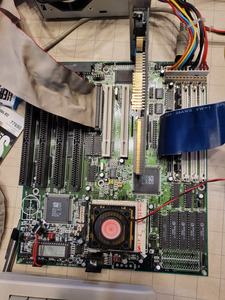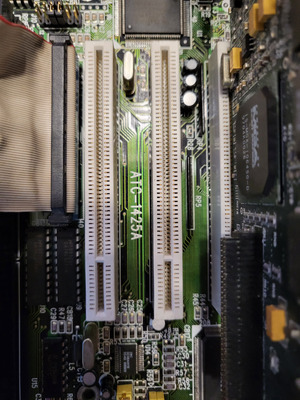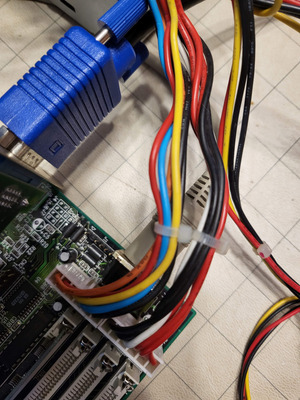First post, by nathanieltolbert
Hello everyone. I know I am posting again and I apologize if I am causing frustration or upset. I recently came across a 486 motherboard with PCI slot. The battery had been removed and it had a strange circle on the board which made me think it could have either a varta battery or a cr2032 holder. I went ahead and purchased it. I was slightly nervous because I haven't had great luck shipping internationally lately, but it arrived yesterday. It came with a CPU, 32MB of RAM and 256K of Cache. I checked the board visually as best as I could and everything appears to be okay. There doesn't even seem to be any damage under where the Varta Battery would have gone, although it is clear one was installed and removed. I looked at the board and it's labeled as an ATC-1425A. After some googling I was able to find a partial list of the Jumper settings on ELVHB website and some more information on the Win3x website as well. The board seems to be in decent shape and it safely arrived which makes me very happy. But I have a couple of curious questions.
The first question is this - the partial jumpers page I found shows a jumper for setting to an external battery. Looking around the board I can see one single jumper labeled J1 which is keyed. Is this the external battery connector? It appears to have one pin more than the other external battery connectors I have encountered, but those are usually on a proprietary board from a big box manufacturer. Second, if there is an outline that appears to indicate that the board could be fitted at manufacturing with a CR2032 battery holder, is it possible for me to install one? Third, if I can install that battery holder, like in other boards, is there a spot where I will need to install a diode to block charging flow? And the last question I have is dealing with using the PCI for a video card. I have several different video cards that I am testing with. I was curious about two fairly low end (from what I understand) graphics cards, one is a Trident TGUI9680 with 1MB of RAM, the other low end card is a Cirrus Logic CL-GD5434 with 1MB of RAM as well. Frame rates seem to be pretty consistent in the Dosbenchmark suite from Phil's Computer Lab (Thank you again for making this suite. I would not even know where to grab a lot of these programs if this didn't exist) The Trident scores 53.0 in 3DBench 1.0, and the Cirrus card scored 54.9. Looking at these cards in Speedsys the Trident shows a video RAM speed of about 9.5MB/s and the Cirrus Logic card shows a video RAM speed of about 11 MB/s. I have a Matrox Mystique with 2MB in there now and the RAM speed on that is listed as 21.5 MB/s But in 3DBench it scores a 55.5. Do these speeds indicate that both of the 1MB cards aren't interleaving the RAM on the card? Or am I missing something?
Last question - I saw on the Win3x site that there is a driver for the IDE for DOS and Windows. Is this required? As it currently stands I'm getting about 3 MB/s on the IDE transfer speed. The drive is recognized by the BIOS and running in Mode 4. Is that PIO Mode 4? Should I be getting closer to 16 MB/s or is that just the theoretical max for PIO Mode 4.
If anyone knows where I can find a diagram that lets me know what the jumpers that aren't covered in the web page I found I would be very appreciative. If there is any additional information that is needed, please let me know. I will post a couple pictures here as soon as I can take them. Thank you.
Regards,
Nathan


